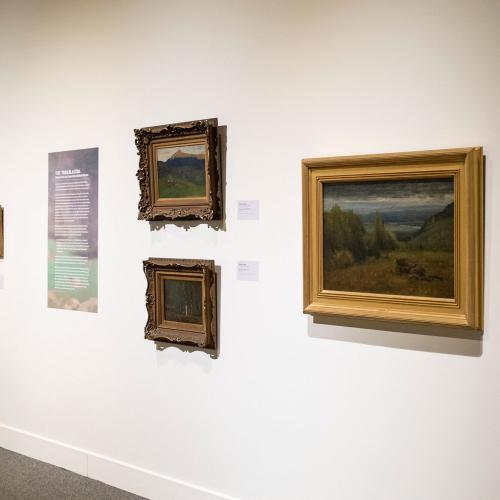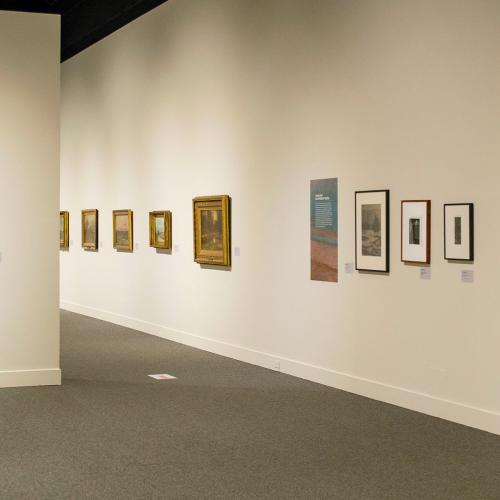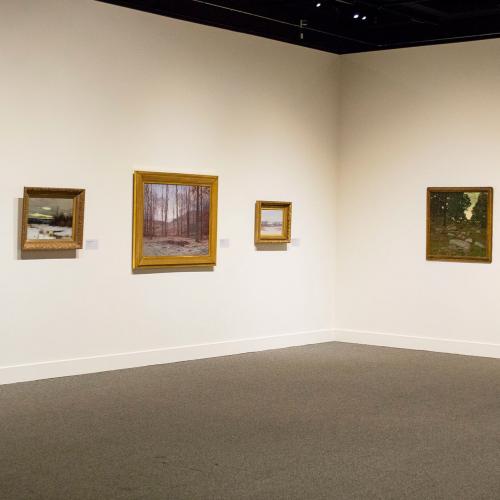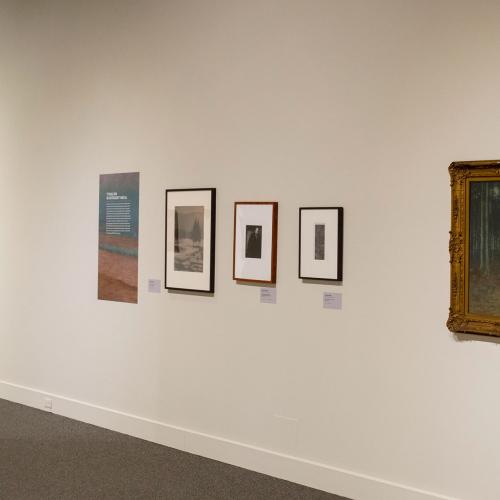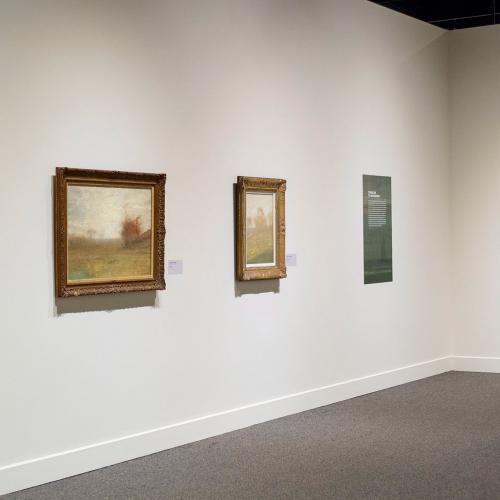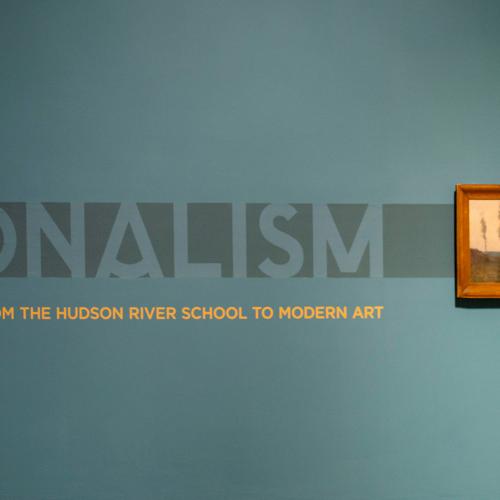
Tonalism: Pathway from the Hudson River School to Modern Art
This exhibition explores Tonalism in the United States as a connection between the Hudson River School in the second quarter of the nineteenth century and Modernism in the twentieth through artists with ties to New York State. The historic role of Tonalism has not always been agreed upon by scholars and critics. On one hand, it has been long considered a conservative style, often discussed as the antithesis to Impressionism, its contemporary. More recent publications, however, have begun to reassess Tonalism as innovative in its approach to representation both intellectually in concept and as realized in the finished work of art. Thus, it can be argued that while Tonalism grew out of and reacted to the Hudson River School and other influences, it also helped lay the groundwork for Modernism.
Tonalism in the broadest sense can be seen as an approach to representation that relied less on faithfulness to visual reality and more on creating an evocative mood, often through memory. Landscapes dominated the movement, but not exclusively, as figurative works were also produced. A prevailing sense of quiet was achieved in Tonalist works by typically depicting subjects at either end of the day in muted light and with a range of delicate colors, thus “tonal.” Emerging in the years after the Civil War, Tonalism appealed to an audience in need of respite not only from the devastation of the war but from Reconstruction and the rise of industrialization and urbanization in the war’s aftermath. For many in the era, a retreat from the external world could be tinged with a quest for spirituality. Overall, though, Tonalism encouraged contemplation.
The group of artists included in the exhibition is not meant to be an exhaustive representation of those who practiced Tonalism or even Tonalism in New York. Some of these artists are widely known, others not, and still others, until now, have not been studied in the context of the movement. Drawn from the collections of smaller institutions across the state, as well as private collections, the artists range from Frederick Kost (1861–1923) on Long Island; to those associated with Woodstock in the Hudson Valley, including Birge Harrison (1854–1929), Eva Watson-Schütze (1867–1935), and Bolton Brown (1864–1936); to Alexander Helwig Wyant (1836–1892) in Arkville in Delaware County and Keene Valley in the Adirondacks; to Walter Launt Palmer (1854–1932) and others who had ties to Albany. The goal is to cast a wide net and consider Tonalism as a broader concept than heretofore presented.
Select Gallery Views
The exhibition, Tonalism: Pathway from the Hudson River School to Modern Art, was on view in the New York State Museum's West Gallery from February 15, 2020 to November 30, 2020.



